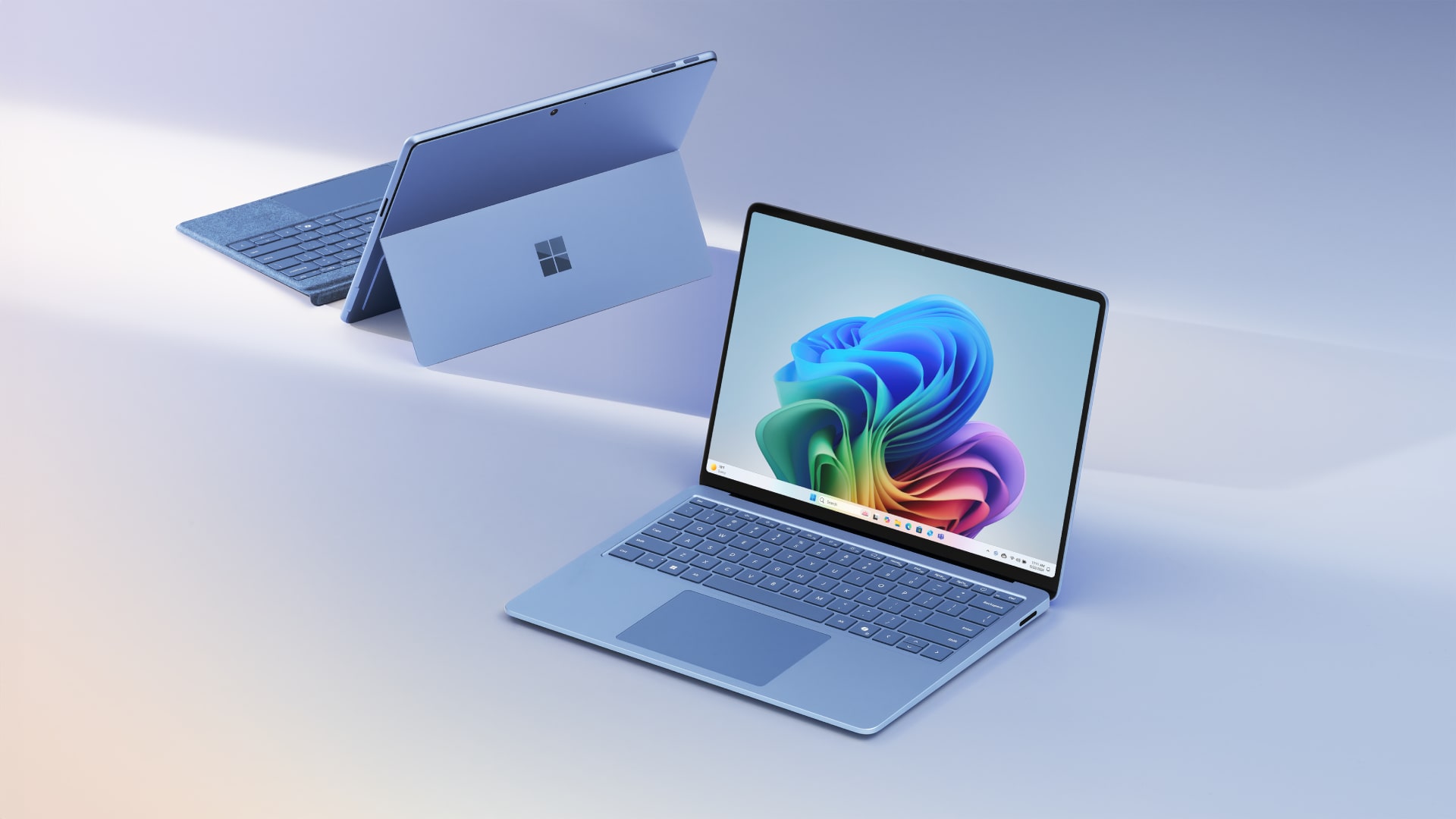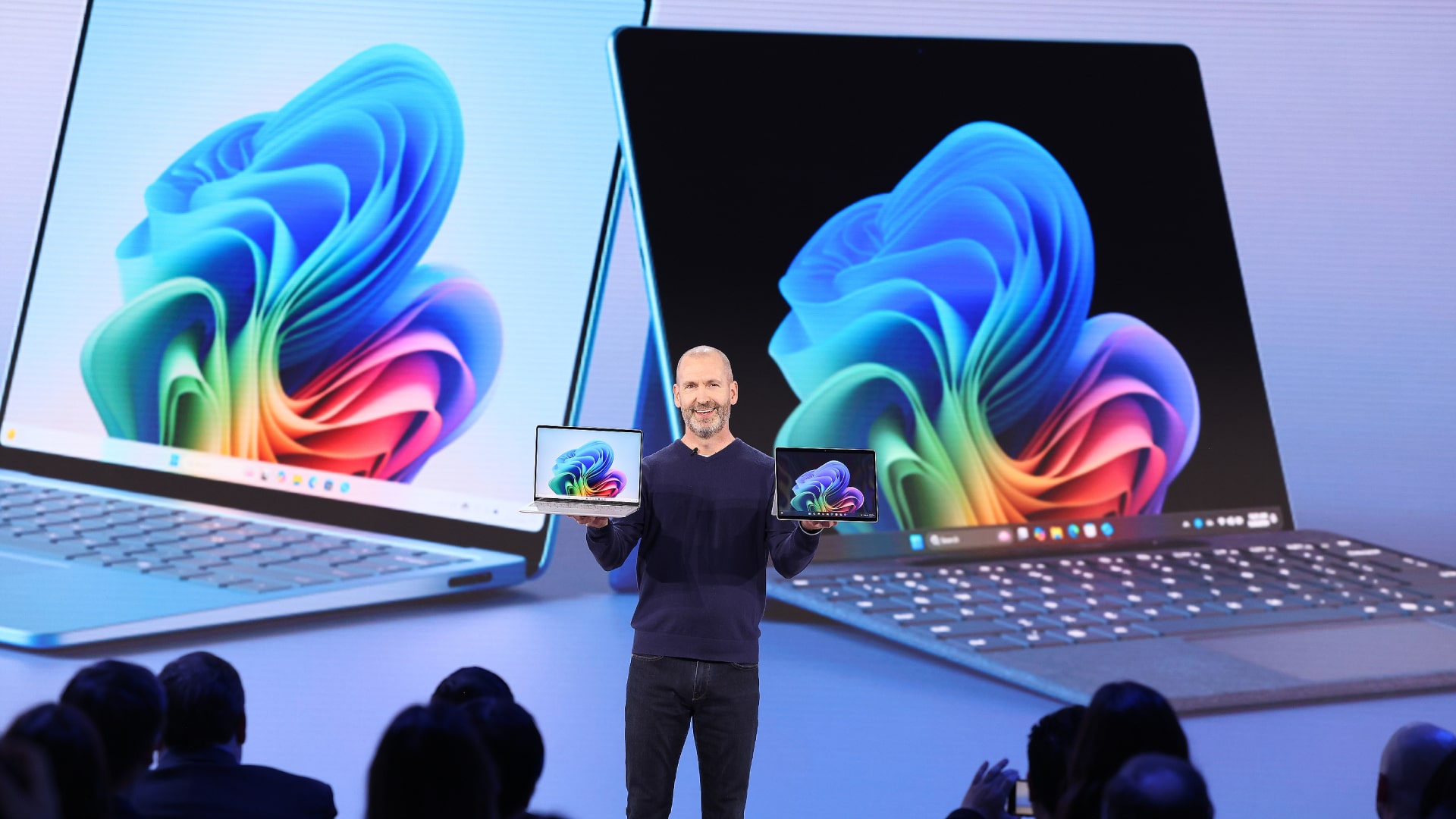Microsoft says its new Surface Laptops beat the MacBook Air, but is it the right comparison?
Should Microsoft be looking a little closer to home?

Microsoft has unveiled new Surface Pro and Surface Laptop devices that it says can directly compete with – and outperform – Apple’s MacBook Air. Yet while their performance is truly impressive, there’s a notable caveat that suggests the MacBook Air comparison isn’t quite on the money.
Yesterday, Microsoft put on a special show for its new laptops, which come equipped with Qualcomm’s Snapdragon X Elite chips based on the Arm architecture. This is the same architecture that Apple’s latest M3 chips are built on, and it is known for its ability to combine blistering performance with ice-cold efficiency.
In tests seen by The Verge, Microsoft’s laptops – dubbed Copilot+ PCs – beat the M3 MacBook Air in a series of benchmarking trials measuring chip performance. In terms of battery life, too, Microsoft apparently came out on top, managing just under 17 hours in a web browsing test and over 20 hours of video playback.
Microsoft tested the MacBook Air in these areas too, and it clocked in at 15 hours and 25 minutes in the first and 17 hours and 45 minutes in the second, putting Microsoft’s device comfortably ahead.
The Arm advantage

So, is this the end of the MacBook Air’s reign? Well, not quite. As pointed out by Ars Technica, Microsoft says its new laptops come with fans, which the MacBook Air does not.
That means Microsoft has a distinct advantage in terms of cooling, which will always help a chip eke out extra performance. The MacBook Air can achieve its remarkable performance while remaining completely silent, and while the Surface’s performance is undoubtedly incredibly impressive, equipping it with a set of fans means it’s always likely to pull ahead of Apple’s fanless laptops.
Perhaps a more apt comparison is with the Intel-based Microsoft Surface laptops that came before the latest Snapdragon X Elite models. The Verge notes that 2022’s Intel-based Surface Laptop 5 offered eight hours and 38 minutes in a web browsing battery test – just half of what the latest Surface can now offer.
Sign up for breaking news, reviews, opinion, top tech deals, and more.
If you’ve got an Intel-based Surface laptop now and are thinking of upgrading to the Snapdragon model, you will likely notice a sizable improvement in performance and battery life. Microsoft also says it has radically stepped up app compatibility for its Arm-based chips, with a new emulator called Prism that Microsoft claims is as good as Apple’s Rosetta 2 at running non-native apps.
The new Surface Laptop starts at $1,000 / AU$1,899 for a 13-inch model with Snapdragon X Plus chip, 16GB of memory, 256GB of storage and an IPS LCD display. The Surface Pro, meanwhile, starts at $1,049 / AU$1,899 for an LCD screen or $1,549 / AU$2,699 for an OLED display. Its base model offers 16GB of memory and either 256GB or 512GB of storage, depending on which display option is chosen.
You might also like

Alex Blake has been fooling around with computers since the early 1990s, and since that time he's learned a thing or two about tech. No more than two things, though. That's all his brain can hold. As well as TechRadar, Alex writes for iMore, Digital Trends and Creative Bloq, among others. He was previously commissioning editor at MacFormat magazine. That means he mostly covers the world of Apple and its latest products, but also Windows, computer peripherals, mobile apps, and much more beyond. When not writing, you can find him hiking the English countryside and gaming on his PC.